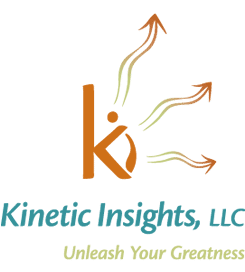We are evolving into a new stage of business operations, one that is driven by virtual relationships and management, and therefore, our leadership styles and skills must evolve as well. Collective leadership is emerging as the next and best phase of leadership for our post-pandemic world.
Collective leadership embraces shared responsibility and accountability. It offers the realization of more potential from team members, distributed decisions that are better aligned with the areas of responsibility, and a flatter organizational structure in which success comes from the diverse perspectives and skills of many individuals. Collective leadership will encompass our ability to collaborate. These skills expand the community’s ability to break down silos, encourage shared accountability, effectively manage conflict, and lead innovation by example. Utilizing collective leadership skills allows teams to transcend the skills of the individuals.
One of the key elements of healthy collective leadership is asking powerful questions. Even if we feel our questions are spot on, every valuable leadership skill can be improved. Let’s begin by reviewing our questioning from the standpoint of 1) the intention behind our question(s), 2) the impact of our questions and 3) asking the “right” question to drive collective leadership on important topics.
Collective Leadership requires intention behind your questions
What is your most common intention behind asking questions? Are you asking because you do not know the answer? Are you leading someone to your answer? Do you want to find out how much someone else knows? Are you searching for what isn’t known versus what is known? All of these have a place in our questioning skills. For example, I would stay away from open ended philosophical questions to find out if someone has innovated new ideas when we are facing a crisis. This would slow the process to resolving a difficult, time critical situation. Just as unproductive is asking a leading question when you are developing a leader’s capabilities to lead others.
I have coached executives who are just realizing they have a more dictatorial style than is effective in their position. They often say they want to practice but just don’t have the right questions to ask. My response is to be authentic in your intention. Be forthright on your intention and match the intention and questions to the situation. More often than not, it is beneficial to have an intention of curiosity. Or said differently think of your job, as the leader, to frame the problem and your team’s job to find the best solution and shortest path to the solution.
Sample questions that demonstrate curiosity and engage others in a dialogue:
- What sector of our present or future market will we be serving?
- What aspect of the customers’ business will be impacted?
- How will this impact our stakeholders?
- What outcome are we seeking?
- What obstacles do you anticipate?
- What ideas can the team offer to shorten this cycle?
- What was your reaction to what was just said?
- What have you and the team decided about this issue?
- How did you get here?
- What may have caused that reaction/failure/success?
How to ask impactful questions for stronger Collective Leadership
Don’t start with Why
If our intentions are anything but asking the Simon Sinek’s Golden Circle “why”, then we should refrain from starting a question with why. What is the reasoning behind not using why? Why questions tend to make people defensive and reduce the collaborative or developmental impact. Another no-no is to ask a question with the answer embedded and thinking you are helping someone get the answer. You might as well just tell them what you want to tell them. It does nothing to engage others in a conversation and generate discussion and ideas from the community or an individual. It is also not good practice to ask leading questions to generate a discussion.
Take a risk and put your answer on hold
Ask open ended what questions to show people you want them to come to the table and share their ideas and thoughts. Even if you believe you already know the right answer, take a risk by putting your answer on hold and become curious to find out what others think. Unless the question is critical or urgent, this tougher challenge often offers greater opportunity for success. Engaging others to bring their best thoughts forward helps ensure more opportunities are reviewed and considered. There just might be a better idea or solution proposed by the quietest member of your team.
Play the game
One of the techniques that I use is making a game – with myself – out of asking the questions to get everyone’s input before giving my own thoughts. Then the game is to see if my questions can generate a better answer than mine. My favorite questions go something like this:
- Here is the problem, what do you think we should do?
- Walk me through the implementation of your solution?
- What problems could we encounter?
- Did you consider other solutions?
- Can you explain what makes this solution the best one we could implement?
- If we didn’t have any constraints, what solution would you offer?
Collective Leadership requires asking questions on the important topics
I was researching books for an executive client who was coaching a new leader. The book summary (Executive Book Summaries) that caught my eye was Learning to Lead, the Journey to Leading Yourself, Leading Others and Leading an Organization by Ron Williams and Karl Weber.
They offer the concept of using questions to determine what is really important versus simply eye catching. When a topic is important, you want to make certain your questions pull out maximum input to ensure an ideal solution is discovered. Williams and Weber list the following sample questions under key topics to ensure leaders are addressing the really important issues.
Degree of uncertainty: What is the degree of uncertainty regarding our knowledge of this issue? How confident are we that we understand the nature and the scope of the issue?
Financial impact: If this issue were left unaddressed, how could it affect the finances of our organization over the next week? Over the next month? The next six months? Maybe the next five years?
Stakeholder impact: How directly and significantly is this issue likely to affect our organization’s key stakeholders, including customers, employees, investors, suppliers, business partners, and community members?
Future scope: How probable is it that this issue will become more serious or widespread? How quickly is this likely to happen?
Reputational impact: What is the likely impact of this issue on the reputation of our organization?
Underlying cause: How likely is it that this issue is caused by underlying problems that are not yet presenting themselves directly? Is addressing this issue likely to help us uncover and begin to deal with those underlying problems?
Ultimately, better questions build more productive collective leadership along with developing team members to access more of their creativity and solutioning skills.
For more information on questioning skills, I recommend: Change Your Questions, Change your Life by Marilee Adams and Humble Inquiry by Edgar H Stein.











Leave A Comment